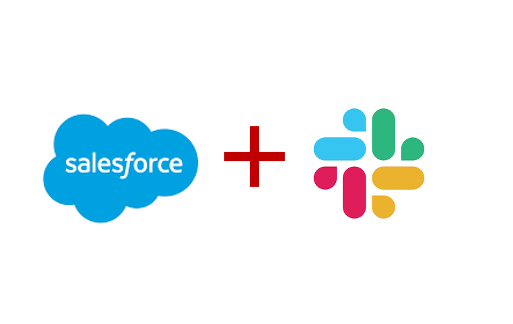
Today various media outlets broke the news that Salesforce is in advanced talks with Slack Technologies about a possible acquisition. The news had two effects: Slack stock went up nearly 40 per cent during trading hours while Salesforce stock loses out by 5 percent, which basically says that Salesforce investors are not so convinced about this acquisition being a good thing, whereas Slack investors clearly are.
Slack and Salesforce share an integration, which is listed on appexchange since 2019.
There have been speculations on Slack being a good target for Salesforce that date back till August 2016, basically ever since the integration between Salesforce and Slack got announced.
There are several aspects to this news.
Salesforce already has Chatter, a tool that often gets negative feedback. The company also owns Quip, which is essentially a solution for the collaborative creation of documents and spreadsheets.
And Salesforce has created work.com, as a solution to increase business resiliency and to improve collaborative work.
On a larger scale, and accelerated by the Covid crisis, the need for fast and efficient communication and collaboration of distributed work forces and their customers, using various means of communication is there. Actually, it has been there for quite some time, as the emergence of solutions from Slack to Teams, Zoom, etc. proves. E-mail is still very important, but only a part of this communication, which includes near instant chat, voice and video communications as well as collaborative work on documents – inside and outside an organization.
Another part is, that this communication needs to be tied to business processes and enable three things: Better outcomes by connecting all documents and communications to business processes and business objects, the ability to use this additional data to feed models that enable better predictions and/or actions and a reduction of efforts for the involved people, e.g. when it comes to finding information.
Businesses have a challenge here and are looking for solutions to fix it, and fast. This can be seen by the revenues of Zoom nearly quadrupling between Q2/19 and Q2/20 or the usage of Microsoft Teams skyrocketing from 13 million daily active users in July 2019 to 75 million daily active users in April 2020. At the same time Slack grew its paying customers between February and July 2020 by more than 20 percent, too.
Because of this, vendors of CRM solutions have increasingly been strengthening their built-in collaboration and productivity suites or are forming partnerships with companies in this space.
My first reaction was: Wow!
Slack, coming out of the developer community, has been an early player in the communications tools space. It does not only allow chat, voice and video communication for (smaller) groups but also allows embedding of bots as well as workflows. The company is clearly loved by small companies and startups and has been able to get a substantial number of customers.
As the numbers above show, Slack has not been able to capitalize on the Covid crisis and grow as fast as the competition. Further, Slack has not yet become a profitable business and also has a negative cash flow. Especially Microsoft putting an increased focus on Teams, put Slack, as well as Zoom, under significant pressure, as there is a considerable benefit to use MS Teams in an environment that already uses MS Office. Given that, I think that Slack is in a tight position. I dare saying that Slack on its own would not have been viable for much longer.
When it comes to Salesforce, Slack makes for a terrific addition to its portfolio for various reasons.
Slack enables Salesforce to significantly strengthen its productivity/collaboration suite, bringing it to a level that is no more far behind Microsoft. Productivity/collaboration is one of the four core pillars for a platform player. While Salesforce already has Chatter, this tool only works within a company and does also not allow for voice or video communication.
Neither Oracle nor SAP have a similar technology, although Oracle has its Beehive product that offers web and audio conferencing, plus a strategic partnership with Zoom, which it increasingly embeds into its CX suite. SAP has a strategic partnership with Microsoft and deployed MS Teams throughout its organization.
Slack also comes with far more than 100,000 customers and an expected revenue of in excess of $860 million in FY 2021, which would nicely add to Salesforce’s platform revenues, which in Q2 of FY21 rose to $1.2 bn.
In addition, the customers that Slack brings, are predominantly SMB businesses. In FY 20, less than 900 of 110,000 paying customers spent more than $100,000 for using Slacks services. This opens up a huge opportunity for Salesforce to tap into the SMB CRM market, which is a market that all big players are trying to scale down into. It remains to be seen in how far especially the smaller Slack customers accept a Salesforce that is seen as an enterprise player, as a partner.
In conclusion: For Salesforce, acquiring Slack makes perfect sense. It enriches the platform and therefore the Salesforce CX play. It is at least a jab against Microsoft and ringfences the Salesforce portfolio in the Clash of Titans with Oracle and SAP.



